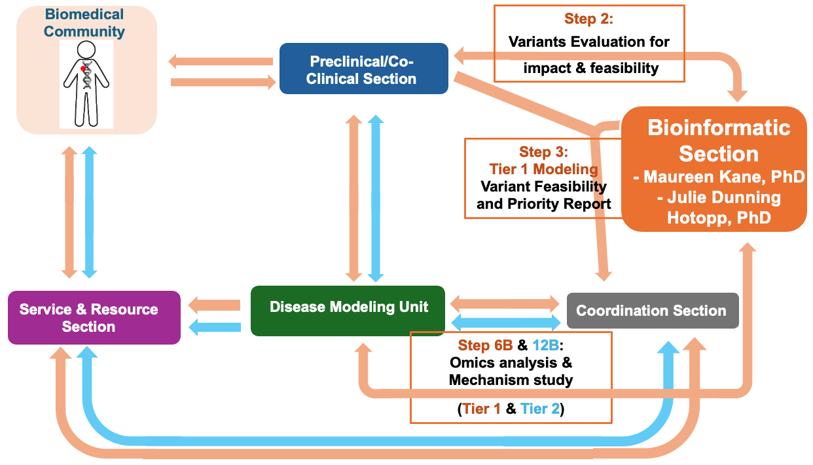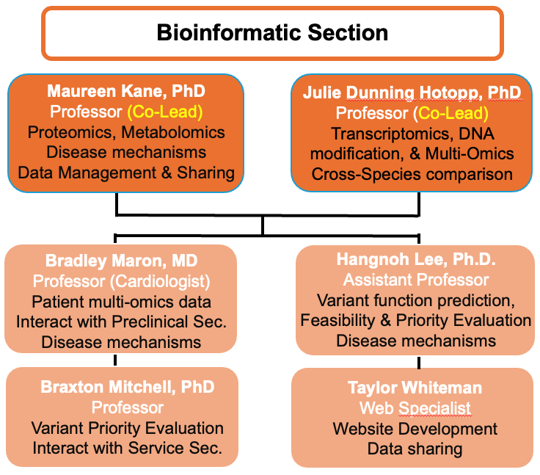Our Mission
The Bioinformatics Section is responsible for providing computational expertise and data management support to the Center’s pipeline projects, ensuring that precision disease models are guided by robust multi-omics analyses, variant prioritization, and translational insights. This section integrates computational tools with clinical and experimental data to uncover disease mechanisms, evaluate modeling feasibility, and enable cross-species comparisons that inform therapeutic development.
Roles of the Bioinformatics Section and its interaction with the other center sections

Organizational Chart

